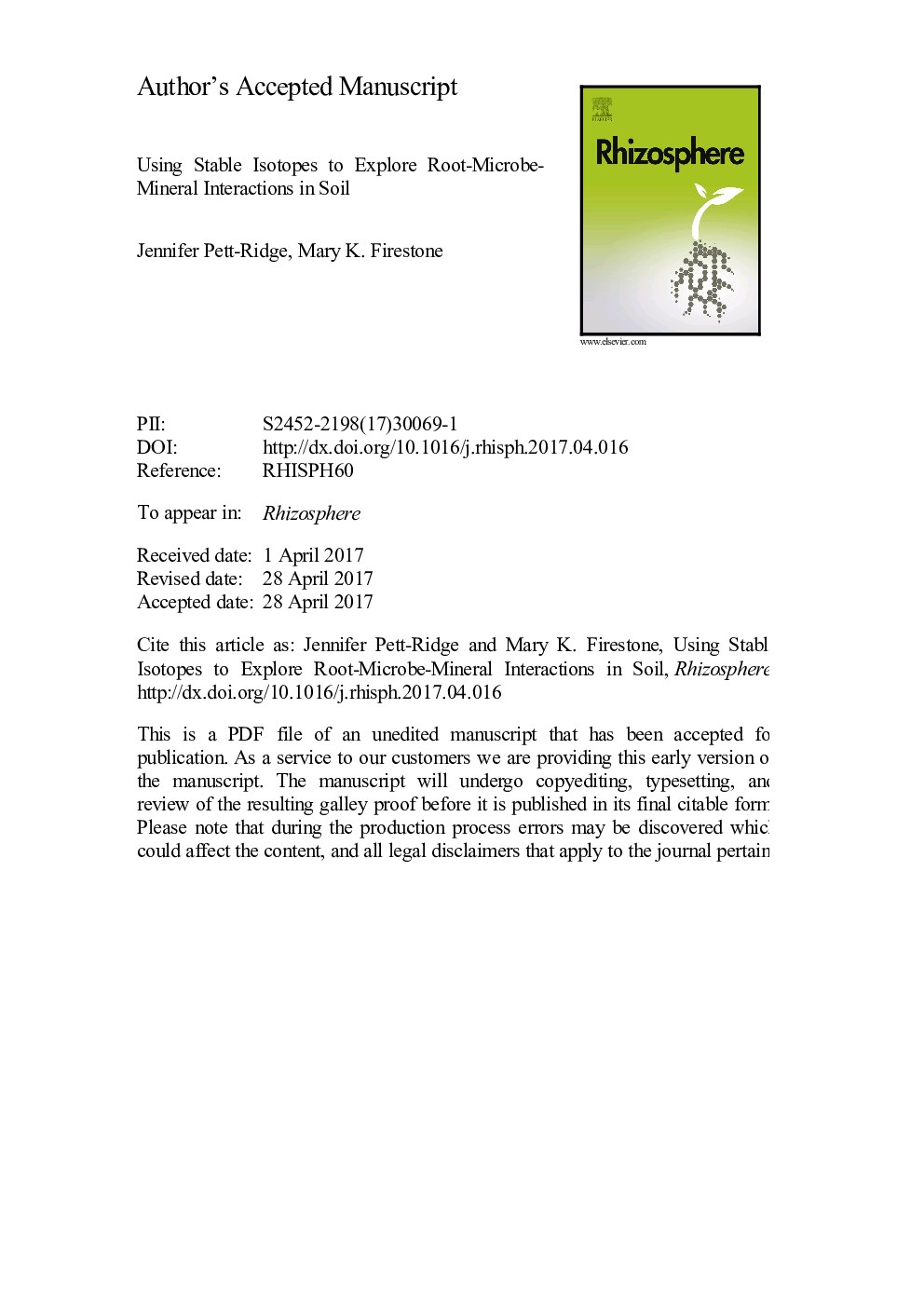| Article ID | Journal | Published Year | Pages | File Type |
|---|---|---|---|---|
| 5762824 | Rhizosphere | 2017 | 39 Pages |
Abstract
The few millimeters of soil surrounding a plant's roots, the 'rhizosphere', are a nexus of biological activity, and inhabited by microorganisms that are critically important to both plant health and soil carbon (C) transformation and stabilization. Advancing our understanding of plant-microbe interactions and the soil carbon cycle requires disentangling the complex relationships among roots, soil microbes, mycorrhizae, and soil mineral surfaces. Yet in wildland systems, many important mechanistic rhizosphere questions remain unanswered. For example, most root C is decomposed to CO2, but of the remainder, what microbial transformations lead to the opportunity to become stabilized? How do plant species and microbial functionality regulate flows of C and nutrients, and how much do these vary over space and time? Transfer of root carbon to bacterial and fungal cell biomass may be a particularly important activity that precedes C stabilization on mineral surfaces, but the steps involved in this process remain ambiguous. In the past decade, multiple 'isotope-enabled' approaches have been developed that allow us to see and measure these complex rhizosphere interactions with high spatial, chemical, and molecular resolution. Here we present illustrative examples of these approaches as applied in non-cultivated soil systems.
Related Topics
Life Sciences
Agricultural and Biological Sciences
Agronomy and Crop Science
Authors
Jennifer Pett-Ridge, Mary K. Firestone,
